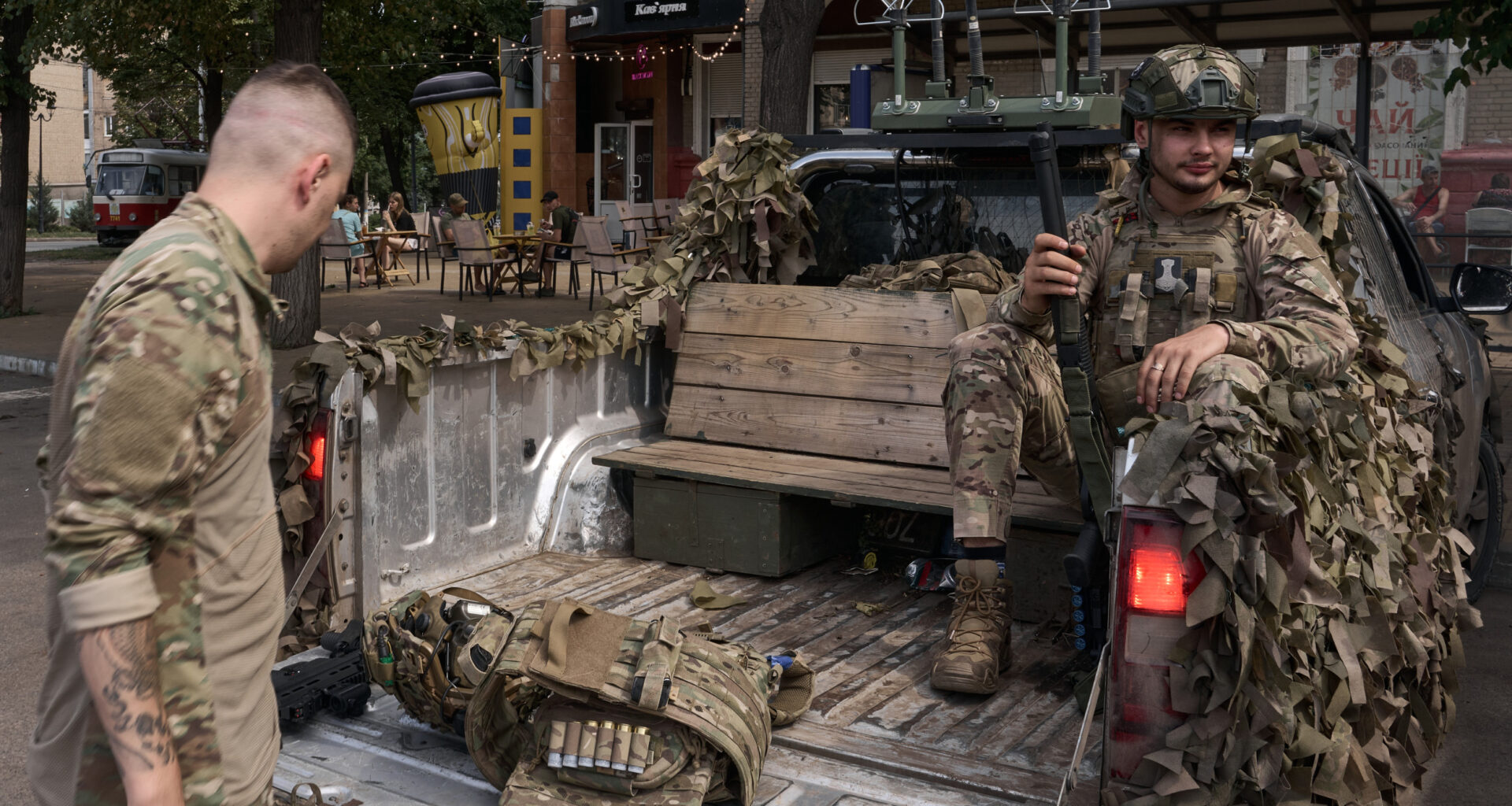July saw the highest number of battles since the start of President Vladimir Putin‘s full-scale invasion of Ukraine as Russia stepped up its offensive in eastern Ukraine, according to analysis.
Independent monitor ACLED (Armed Conflict Location & Event Data) said that in July, there were over 2,600 battles—the highest monthly tally over the three-and-a-half years of war.
ACLED also told Newsweek that Kyiv had shifted the targets of its airstrikes to defense contractors in a bid to disrupt Moscow’s production of drones.

Ukrainian soldiers load a pickup truck on July 18, 2025 in Donetsk Region, near Kostiantynivka on the front line.
Ukrainian soldiers load a pickup truck on July 18, 2025 in Donetsk Region, near Kostiantynivka on the front line.
Kostiantyn Liberov/Getty Images
Why It Matters
A record number of battles and Ukraine and Russia increasing drone and missile attacks outlined by ACLED exemplify how the U.S. administration’s efforts for a ceasefire have yielded little progress, ahead of a summit in Alaska between President Donald Trump and Vladimir Putin on August 15.
What To Know
ACLED’s latest analysis described how Russia’s offensive “went into overdrive” in July, with over 2,600 battles recorded, the highest number since the war started on February 24, 2022, it says. The number of monthly battles has been increasing, reaching high after high, throughout the last several months of 2025.
It noted how Russian forces had closed in on Pokrovsk and Kostiantynivka in the Donetsk region and on Kupiansk in the Kharkiv region.
Moscow also made gains further east toward the Dnipropetrovsk region. Ukraine has launched counterattacks toward the city of Sumy.
The high number of battles comes amid a spike in Russia’s remote attacks on Ukrainian civilians in July to reach an all-time high of 458 which killed 250 people, the highest toll since September 2022 according to ACLED.
Only one third of these casualties were in the Donetsk region where the fighting was concentrated, ACLED said, with Kyiv facing 30 long-range drone and missile strikes, the highest since March 2022.
The outlet said that Ukraine’s forces increased its drone, missile and artillery attacks on Russian soil by a fifth in July, from 1,167 to 1,400. This included a 75 percent increase in strikes occurring outside of Russia’s border regions.
Between June and July, the Ukrainian army switched priorities from military airfields to disrupting Russia’s drone production, ACLED said.
On Friday, Ukrainian drones struck the Yenisei radar station, a component of Moscow’s advanced S-500 air defense system, in Russian-occupied Crimea, according to Ukraine’s military intelligence (HUR).
But Russian attacks against Ukraine show no sign of abating, with attacks killing at least eight civilians between Friday and Saturday, including a strike on a bus in Kherson in which two people died, according to Ukrainian authorities.
Ukraine’s air force said Saturday that Russian forces launched against Ukraine 47 Shahed-type drones and decoys from Russia’s Rostov, Kursk and Smolensk regions and two Iskander-K missiles from the Russian-occupied Zaporizhzhia region.
ACLED told Newsweek that as Russia’s remote attacks on Ukrainian civilians increase, Kyiv has shifted the targets of its airstrikes to defense contractors with strikes that continue to reach further inside Russia to disrupt the production of drones Moscow launches.
What People Are Saying
ACLED Senior Analyst for Europe and Central Asia Nichita Gurcov to Newsweek: “Russia’s grinding offensive in eastern Ukraine went into overdrive in July—leading to the highest number of battles since the all-out war began in early 2022. Alongside the intense battles, Ukrainian civilians are suffering from remote attacks.”
What Happens Next
Ukraine’s drone strikes on Russian facilities and Moscow’s continuing bombardment of Ukrainian civilian infrastructure set the scene for talks in Alaska between Donald Trump and Vladimir Putin that the U.S. hopes will help end the war.
